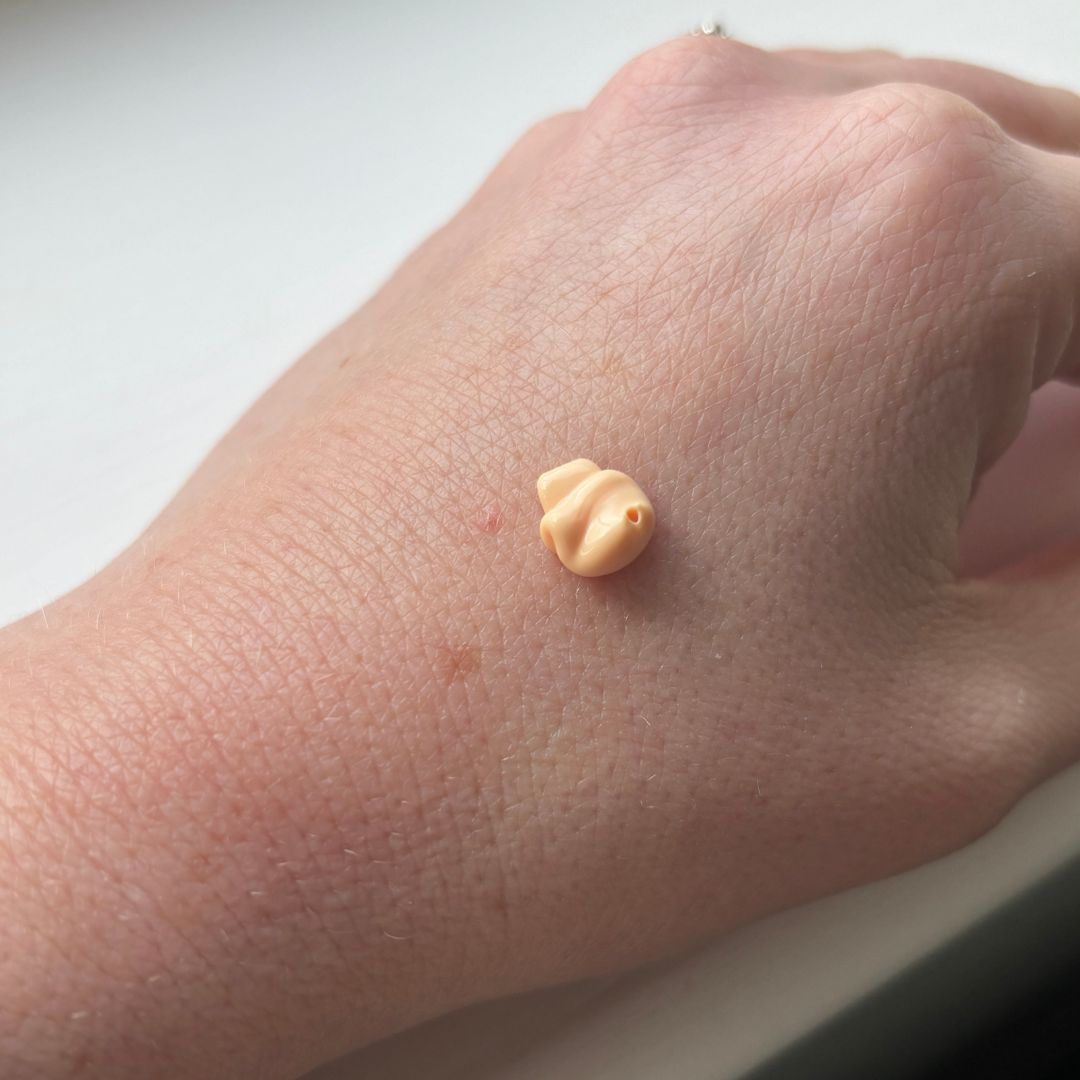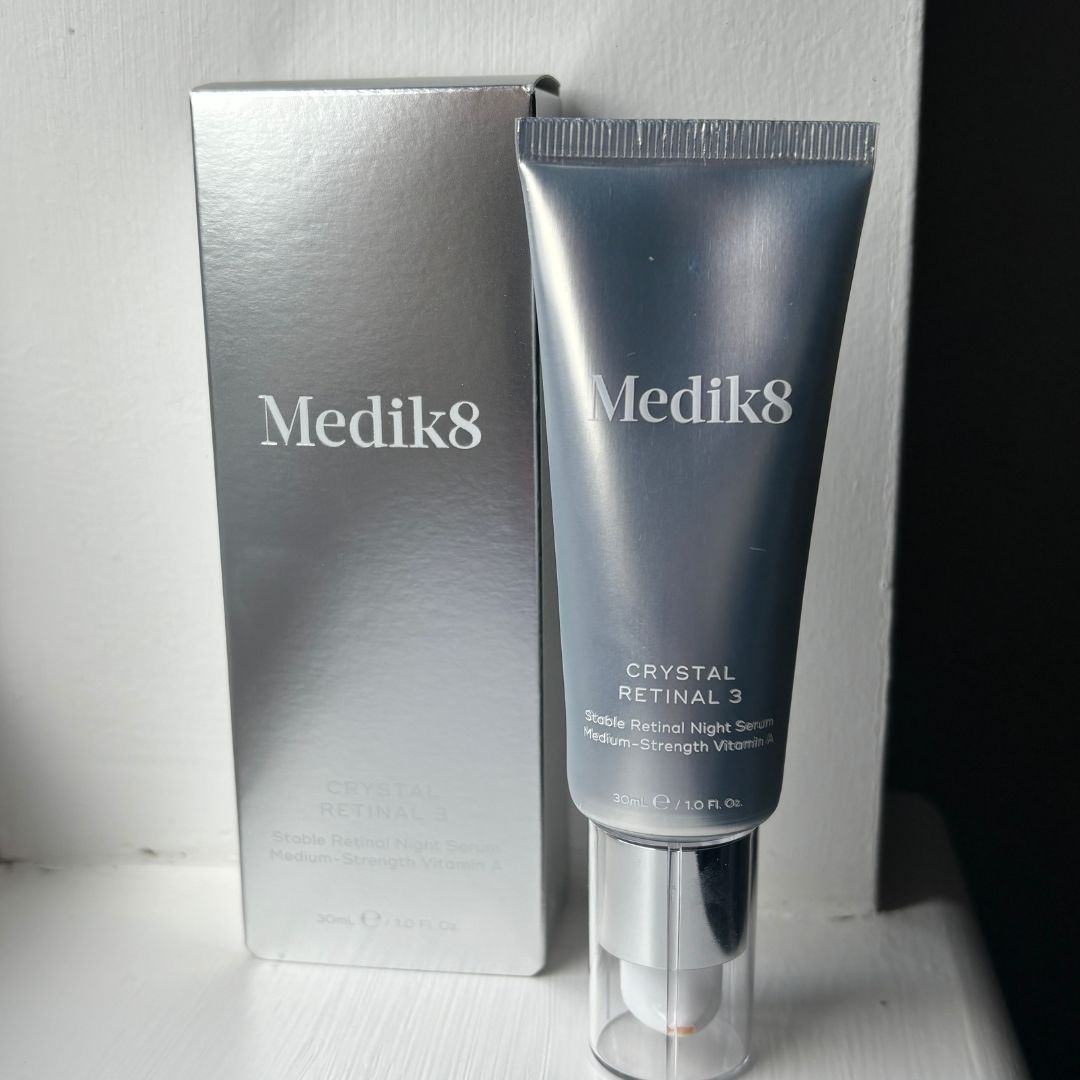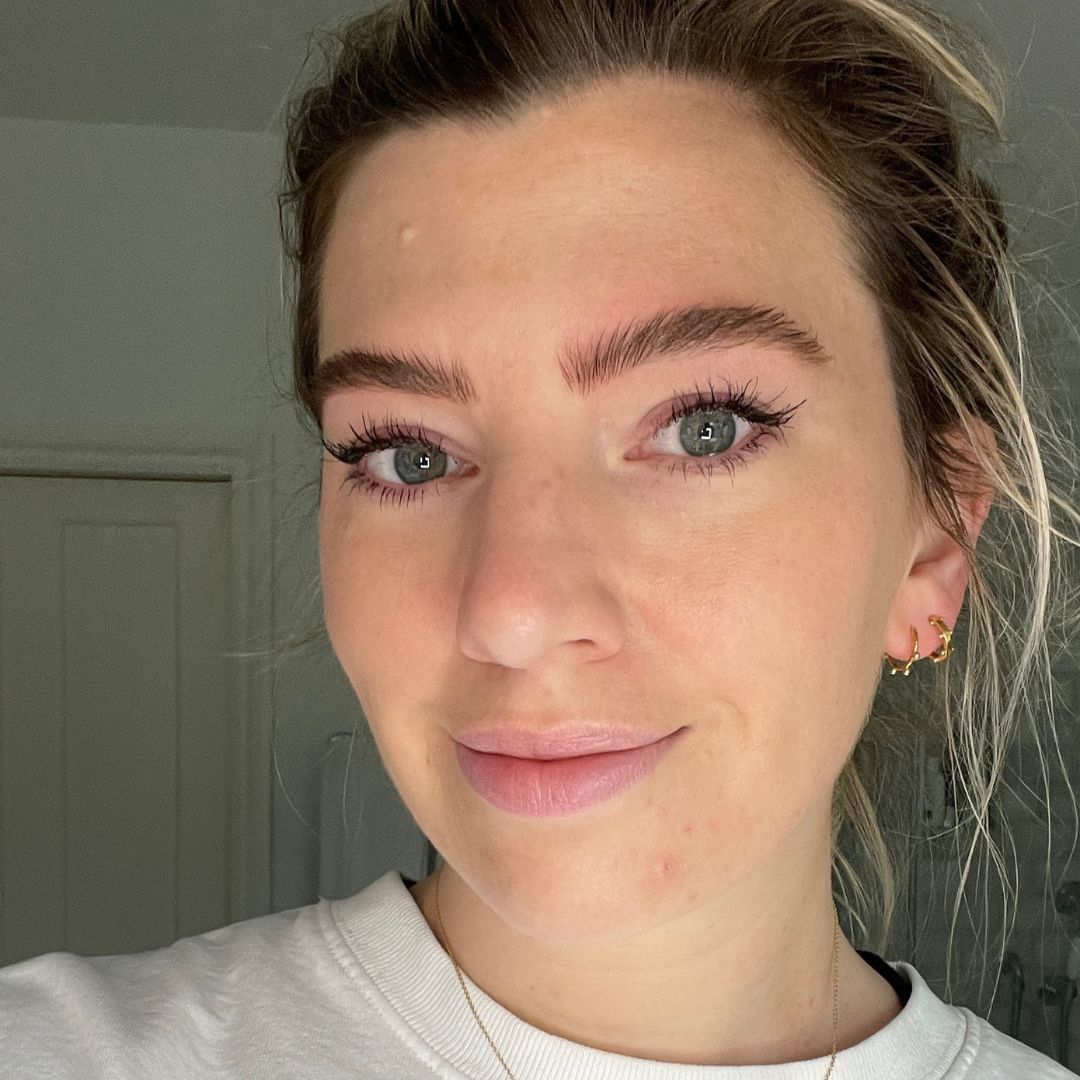
Speak to any dermatologist and you’re likely to hear the same trio of products touted as the recipe to healthy skin: the best vitamin C serum, retinol and a daily facial sunscreen. The term ‘retinol’ is often used to refer to any derivative of the vitamin A spectrum (more on that later), and one product regularly tops the lists of the best retinols: Medik8 Crystal Retinal.
Part of the brand’s derm-approved CSA philosophy (vitamin C, Sunscreen, vitamin A), Crystal Retinal Night Serum is one of several vitamin A-based products that Medik8 sells, and arguably its most famous: it uses an internationally patented delivery system, is clinically proven to deliver noticeable results, and is a favourite with beauty editors—including me.
Aside from its impressive youth-boosting effects on the skin, what makes Crystal Retinal so popular is how gentle it is. Using retinol-type products can often result in a dryness, flaking or increased sensitivity as new skin cells are regenerated and old ones are shed, but Medik8 encapsulates its retinal or (retinaldehyde to use its full name) in a slow-release ‘crystal’ technology, meaning maximum results with minimum risk of irritation.
Medik8 reports that 97% of testers felt that their skin looked more youthful after using this serum for 12 weeks, with 100% also saying that it felt gentle.
Crystal Retinal is available to buy in five strengths ranging from 1 (containing 0.01% retinaldehyde) to 20 (0.2% retinaldehyde), so there’s something for everyone, from vitamin A newbies up to experienced users. This also means you can steadily increase your dosage for optimal results.
What is retinal?
As mentioned, retinol is often incorrectly used as an overarching term for vitamin A, but retinol and retinal are actually two different deriviatives of the ingredient, explains Dr Anjali Mahto, consultant dermatologist at Self London. “Retinal, also known as retinaldehyde, is a form of vitamin A that sits between retinol and retinoic acid in the vitamin A spectrum. When applied topically, retinal is converted into retinoic acid by enzymes in the skin. Retinoic acid is the active form of vitamin A that affects cellular turnover and collagen production, leading to improved skin texture and reduced wrinkles.”
What you need to know is that you only really see the gold star results of vitamin A on the skin when it's in retinoic acid form. So all vitamin A derivatives - retinol esters, retinol and retinaldehyde - have to convert into retinoic acid. The more steps in that conversion, the less effective it is.
“Compared to retinol, retinal is considered to be more effective at skin rejuvenation due to its closer proximity to retinoic acid,” she adds. “It requires fewer conversion steps in the skin to become active, which means it can produce results more quickly. However, because of its potency, retinal may also cause more irritation compared to retinol.”

How should I use retinal?
Because retinal is more potent than retinol, it's important to start with lower concentrations and gradually increase your use to minimise potential irritation—this is what makes Medik8’s ladder system so simple to follow.
Dr Mahto advises doing a patch test before applying any new retinal product, and build up your use gradually, starting with every 2-3 nights before increasing your usage. Apply it to a clean face, avoiding the eye area, and wait a couple of minutes for it to sink in before following with a moisturiser if needed.
“Another important thing to note is that retinal can increase your skin's sensitivity to the sun, so it's crucial to apply a broad spectrum sunscreen with SPF 30 or higher during the day,” she adds.
“And be patient. Results from retinal products may take several weeks to become noticeable. Consistency is key, so stick to your retinal routine even if you don't see immediate results.”
Medik8 Crystal Retinal review
Now in my mid-30s, I need a retinol/retinal in my skincare routine to not only ward off encroaching fine lines but also keep my pesky hormonal blemishes in check. But I’ve been guilty of overdoing it in the past, applying vitamin A too frequently or at too high a percentage in the hope of quick results, and then ending up with red, bumpy, itchy skin instead.

The first Medik8 vitamin A I ever tried (and loved) was Intelligent Retinol 3TR—an entry level active that gave me clear skin with zero irritation. But its oil texture won’t be for everyone, and as the years have gone on I now need something a little punchier, which is why Crystal Retinal is now my go-to.

I apply this creamy serum every other night, alternating with an exfoliating acid such as Paula’s Choice 6% Mandelic Acid, and then follow with a simple moisturiser—and my skin has never looked better. It manages to keep spots in check while also giving me smoother, plumper, fresher looking skin—and I haven’t had a single tingle of sensitivity.
I’ve used Medik8 Crystal Retinal on and off over the years as I trial other products as part of my job as a beauty editor, but I’m now back on Crystal Retinal 3, where I’ll sit comfortably for a while before considering stepping it up to the higher percentage. I honestly think all skin types would see a difference from using this, and IMO it’s one of the very best retinols—sorry, retinals.
Medik8 Crystal Retinal products
The lowest strength in the range with 0.01% retinaldehyde. A good option for those with very sensitive skin.
With 0.06% retinaldehyde this is a good choice for regular vitamin A users. But don't skip step 3.
0.1% retinaldehyde for advanced users. This is not your first time at the vitamin A rodeo.
0.2% retinaldehyde for highly experience users - you don't go into this lightly and should only graduate to 20 once you are fully comfortable with 10.
The iconic Crystal Retinal range also comes in an eye cream, with a 3-step ladder approach. Starting at 3, then 6 and finishing at 10.







